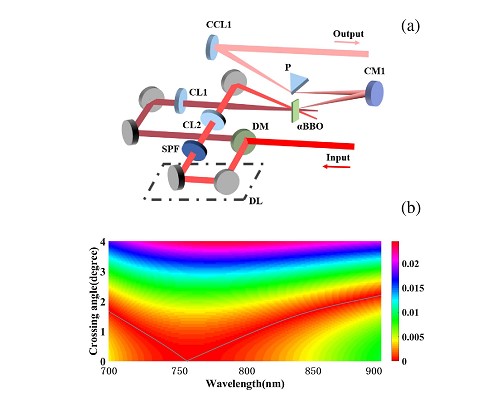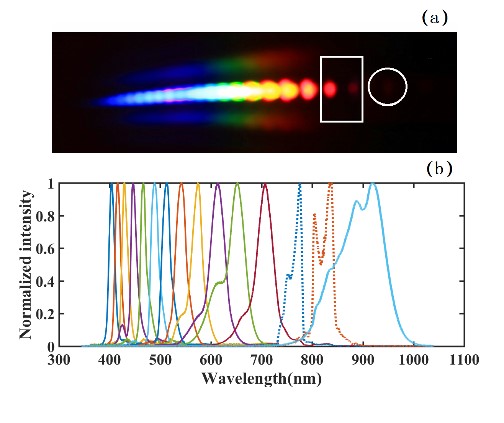Owing to wide applications in numerous interesting laser–matter interaction phenomena in the relativistic or ultra-relativistic region, many petawatt (PW) laser facilities have been demonstrated around the world in the past decade.
At present, however, limited by the size of Ti:sapphire crystal and the parasitic lasing issue, it is difficult to upgrade the peak power to the 100-PW level based on the chirped pulse amplification (CPA) technique by using Ti:sapphire crystal. Fortunately, optical parametric chirped pulse amplification (OPCPA) can also be used to achieve high-peak-power laser pulses using large size of DKDP nonlinear crystals. The central wavelengths of 100-PW-level facilities are then set at approximately 910 nm to achieve a broad gain bandwidth.
So far, multiple nonlinear processes have to be used to obtain the needed 910 nm seed pulse in several different groups around the world. Recently, a research team from State Key Laboratory of High Field Laser Physics, Shanghai Institute of Optics and Fine Mechanics, Chinese Academy of Sciences, has made important contributions to the 910 nm seed pulse generation. The results were published in Optics Letters.
In the experiment, based on single-stage nondegenerate four-wave mixing, the 910 nm seed pulses with the pulse energy of 250-μJ, and broad spectrum that can support a 13 fs were obtained in a piece of transparent medium directly after a commercial Ti:sapphire amplifier.
Furthermore, the angular dispersion of the generated seed pulse was investigated which could be compensated well by using angular dispersive optics, such as a prism. The whole setup is very compact and economical.
Thus the extremely simple process and setup make the output seed pulses stable and reliable,which can be a new choice for 100-PW laser facilities. As the first step in a 100-PW laser facility, seed pulses with high performance are important to guarantee the quality of the output laser pulse.
The work was supported by National Natural Science Foundation of China; the Instrument Developing Project and the Strategic Priority Research Program of the Chinese Academy of Sciences; Shanghai Municipal Science and Technology Major Project.

Fig 1 (a) Schematic of the optical setup. (b). Phase mismatch pattern. (Image by SIOM) 
Fig 2. (a) Photograph of the generated signals. (b) Spectra of input beams and the generated signals. (Image by SIOM)
Article websites:
https://www.osapublishing.org/ol/abstract.cfm?uri=ol-44-16-3952
Contact:
Mr. Cao Yong
General Administrative Office
Shanghai Institute of Optics and Fine Mechanics, CAS
Email: caoyong@siom.ac.cn